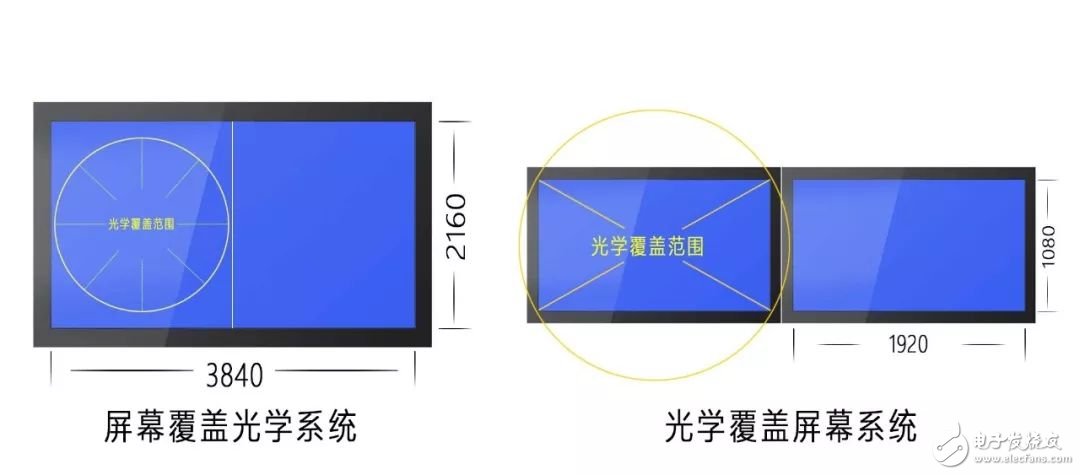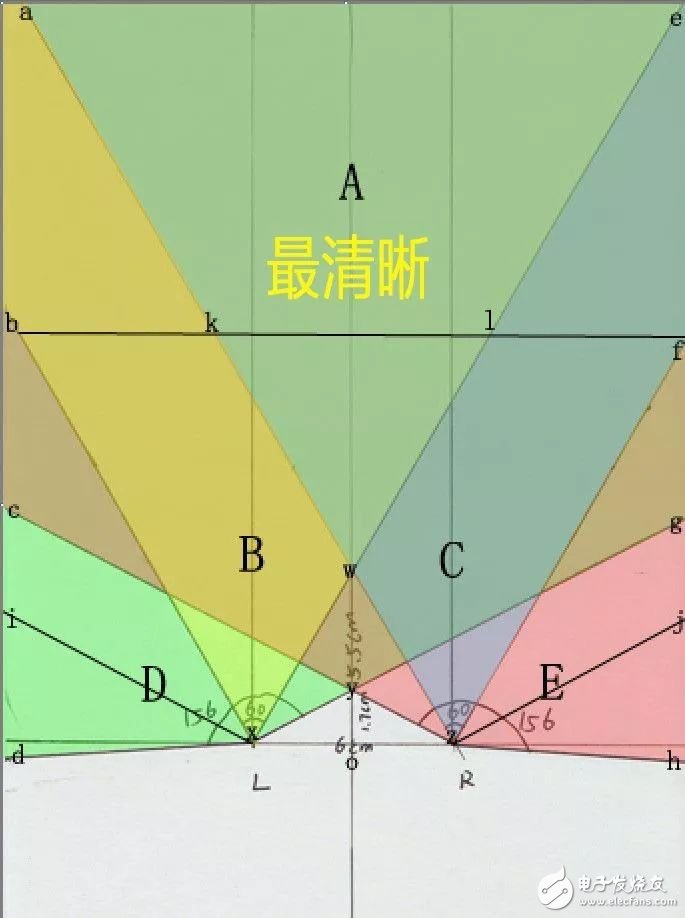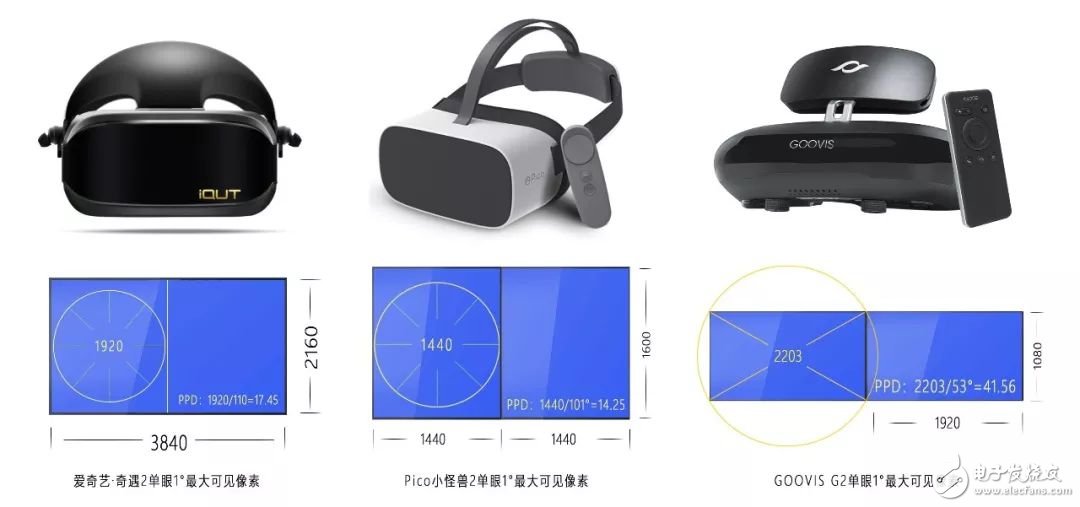In recent months, iQiyi, Pico, and Dapeng have successively launched new products focusing on viewing movies, which have been sought after by users in the market. "Headset cinema" has become a new breakthrough for VR products, and more and more people are beginning to use "head-mounted display" as an emerging technology product to replace traditional viewing equipment such as projectors and TVs.
Usually, when users plan to buy a brand-new, unfamiliar product, they will first go to professional websites and forums to learn about the available products, the positioning of each product, and the core competitiveness. Through preliminary understanding, after selecting two or three favorite products, they will go to the e-commerce platform to make further judgments through parameter comparison, purchase evaluation, and pre-sale consultation.
When buying a computer, you know that it depends on the graphics card, processor, memory, hard disk...
When buying a mobile phone, you know that it depends on the memory, CPU, operating system, screen material and resolution, camera performance...
So what are the main parameters for buying a headset? Is it the same as the traditional display, just look at the resolution, size, etc.? actually not. Head-mounted theater is a new type of display product that can be worn on the head. Wearing comfort and visual comfort during use are the key to determining the value of the product. Wearing comfort is highly correlated with individual differences, and it is not easy to measure with a single objective parameter, while visual comfort can be measured with several key parameters.
Next, the editor will tell you: how to quickly judge whether your selected headset is a good device worth starting with through 3 parameters!
1. Screen resolutionThe importance of display product resolution is self-evident. No matter how tall VR technology is packaged, there must be the core hardware of "high-resolution screen". If the image of a VR head-mounted display is very grainy, even if it has a strong sense of immersion and a good sense of interaction, it is of little significance to the user's core demand for "viewing movies".
Search for "video viewing headset" on the e-commerce platform, 2k, 3k, 4k, 8k, any resolution is available. Anyone who knows about electronic products and screen resolution knows that the higher the resolution, the better the screen resolution. However, in the field of new display devices such as head-mounted displays, the screen resolution is only one of the decisive factors for clarity. There is another decisive factor that determines the clarity of the head-mounted display product: the optical system, the clarity of the optical system to the enlarged image The impact is critical.
There are two types of optical imaging systems for head-mounted display products: screen covering optics and optical covering screen. The principle is as follows.

In order to achieve a large field of view and present the visual effect of a spherical ring screen, VR products build a screen-covered optical imaging system. For example, iQiyi·Qiyu2, Pico Little Monster Series, Xiaomi VR, and Dapeng VR all use "screen package optics" technology. This technology makes VR produce an amazing sense of immersion, but it wastes a lot of "leftovers" outside of optics, that is, "invalid resolution". In fact, the effective resolution seen by the human eye is more than written in the parameter table. The screen resolution is much less.
Compared with "screen package optics", the "optical package screen", an imaging system that maximizes the number of pixels covered by the optics, is much more complicated in terms of technology. Not only have requirements for the resolution and size of the screen, but also have extremely high requirements for optical lens materials, module construction methods, optical path design and other aspects. This is also the main reason why there are not many head-mounted display brands that use optical covering screens. . GOOVIS, Hi-Mirror, and Rouyu are good representative brands in "optical package screen" products. Among them, GOOVIS with uniform edge center definition is the best. Although this technology does not have the virtual immersion of a VR device, it provides the human eye with more effective resolution. In terms of imaging effects, it is much better than VR products.
2. Field of View (FOV)Before explaining the product field of view parameter, we must first popularize the various data of the human eye's visual range:
The horizontal viewing angle of a human single eye can reach a maximum of 156°, the horizontal viewing angle of both eyes can reach a maximum of 188°, the overlapping field of view is 124°, and the single eye's comfortable field of view is 60°. That is, only objects within 60 degrees of a single eye can be focused and seen clearly. The peripheral part that exceeds this range is called the induced visual field, commonly known as the peripheral light of the eye. This part of the human eye is not sensitive enough to see clearly. If you want to see clearly, you have to rotate your eyes at a large angle, and frequent eye movements can easily lead to eye fatigue.

In other words, in the application of movie watching, too large FOV is of no value. Manufacturers have naturally noticed the problem of excessive FOV that affects clarity and can easily lead to dizziness. Therefore, most of them use fixed virtual scenes and fix the playback range in the center of the screen. In fact, the FOV for watching movies is less than 70°.
If you plan to buy a "head-mounted theater", remember: The FOV size has an impact on the viewing experience, but the bigger the better. And FOV also affects another important parameter, please read the next one carefully!
3. Angular resolution PPDUnlike mobile phone screens that use PPI (Pixel per inch) to determine screen clarity, the clarity of head-mounted display products is measured by the parameter of angular resolution (also called spatial resolution). Because the head-mounted display looks at the enlarged virtual image of the screen through the optical system, instead of directly looking at the screen, PPI alone cannot measure the sharpness of the head-mounted display.
The unit of angular resolution is PPD, Pixel Per Degree, which refers to the number of pixels contained in 1° of field of view. The resolving power of the human eye under normal vision is 60PPD. That is to say, the closer the angular resolution of the head-display product is to 60PPD, the closer the image clarity of the product is to the resolution limit of the human eye, and the clearer the image is perceived by the human eye, and the PPD can better reflect what the user feels when using VR. Clarity!
Unfortunately, many products have not announced the PPD, what should I do?
Don't worry, the editor will teach you the calculation formula of PPD: PPD = maximum number of pixels covered by optical / number of field of view angles.
In order to make it easier for everyone to understand, here are examples of the three most popular head-mounted cinema products to show you the specific algorithms.
The three products are: iQiyi·Qiyu 2VR, GOOVIS G2 mobile 3D cinema, and Pico Monster 2.

Adventure 2
A LCD screen, resolution: 3840x2160, field of view: 110°.
As mentioned earlier, the resolution of the display product will be divided into two when it enters the human eye, so the resolution of the adventure 2 using one screen will be averagely cut into two parts. In addition, when calculating, we must first put aside the extra space that is used to ensure clarity and edgelessness in the "screen package optics" of VR products, and calculate based on the theoretical maximum number of pixels covered by the optics.
Therefore, the theoretical maximum PPD of Adventure 2 is: 1920/110≈17.45
Pico Little Monster 2
Two LCD screens, a single screen resolution of 2880x1660, a field of view of 101°, and the calculation method of the maximum number of pixels for optical coverage is the same as above.
The theoretical maximum PPD of Little Monster 2 is: 1440/101≈14.25
☆GOOVIS G2
Two OLED micro-displays with a single screen resolution of 1920x1080 and a field of view of 53°.
GOOVIS G2 uses an imaging system that optically covers the screen. Therefore, the maximum number of pixels for its optical coverage is the number of pixels at the oblique angle of the screen. For this optical system, the calculated value is the actual PPD.
Then, the PPD of GOOVIS G2 is: 2203/53=41.56
By comparing the PPD parameters, we can draw the comparison of the imaging effects of the above three products as follows:
GOOVIS G2> Adventure 2> Little Monster 2.
The PPD of GOOVIS G2 is more than twice that of the other two products, and it is the product closest to the PPD of the retina of the human eye.
Of course, as a "black technology theater on your head", in addition to focusing on imaging effects, wearing comfort is also a factor that must be considered. After all, it directly determines whether you can reuse it for a long time and multiple times. The product weight, volume, wearing style, material, etc. will all affect the wearing comfort. When buying, you also need to consider these factors.
The method is very simple, have you learned it?
I hope this article can help those who want to buy a headset but don’t know how to choose.
Armor With Kickstand Cell Phone Case
Armor With Kickstand Cell Phone Case,Armor Kickstand Cell Phone Case,Kickstand Cell Phone Case Armor,Kickstand Cell Phone Case
Guangzhou Jiaqi International Trade Co., Ltd , https://www.make-case.com
